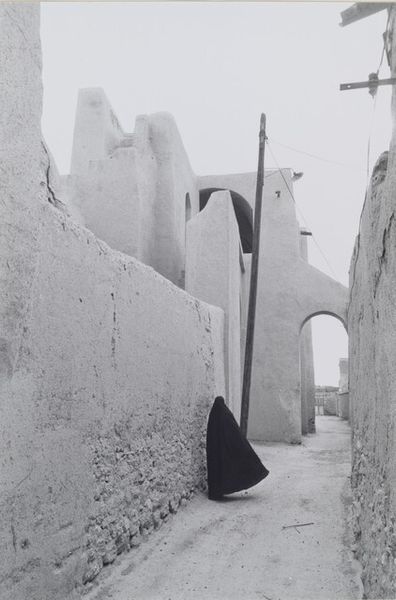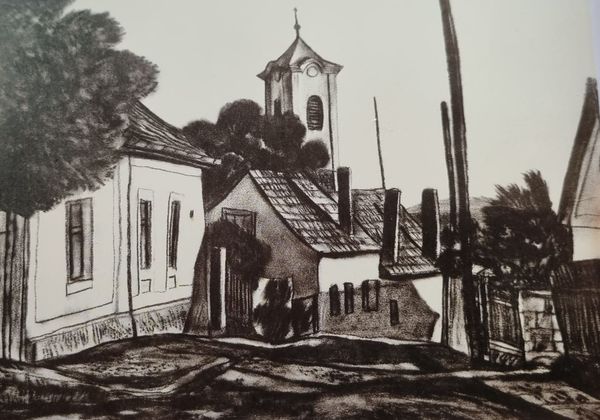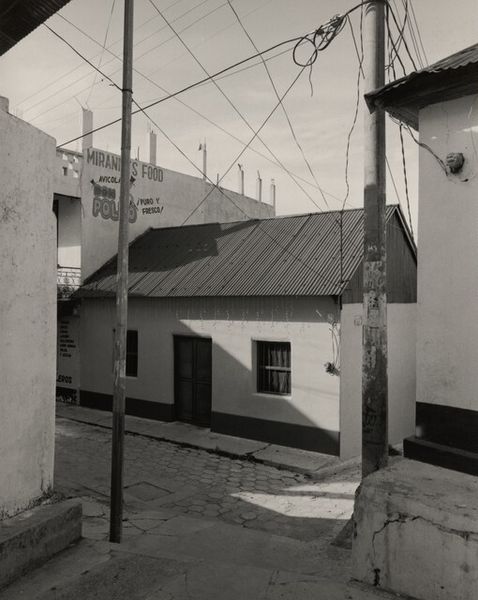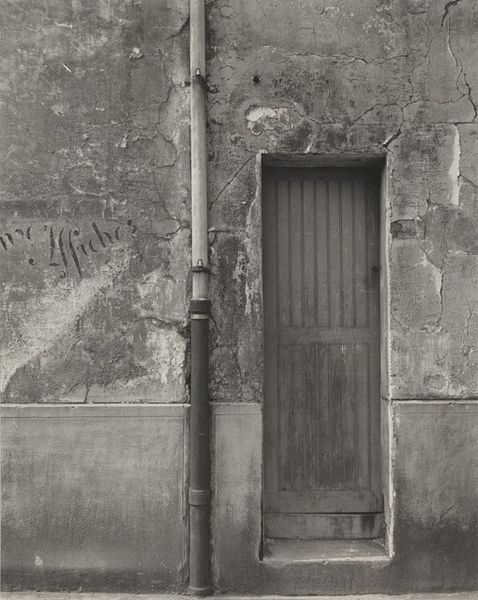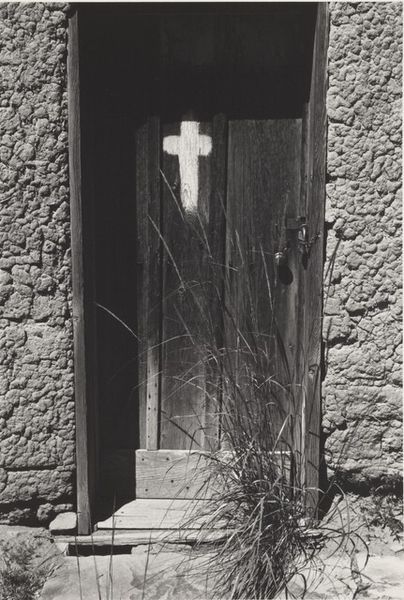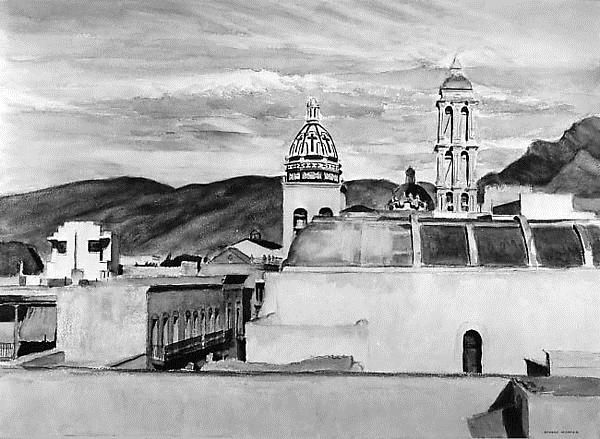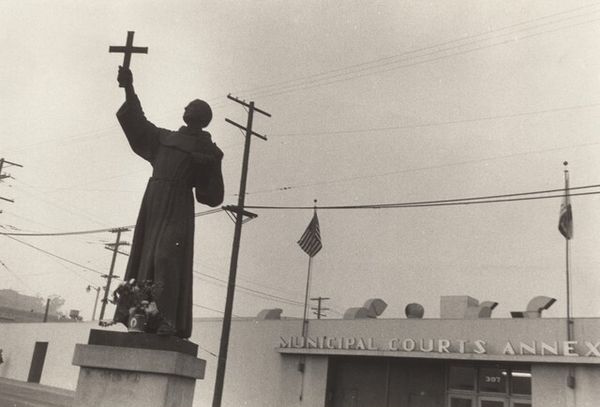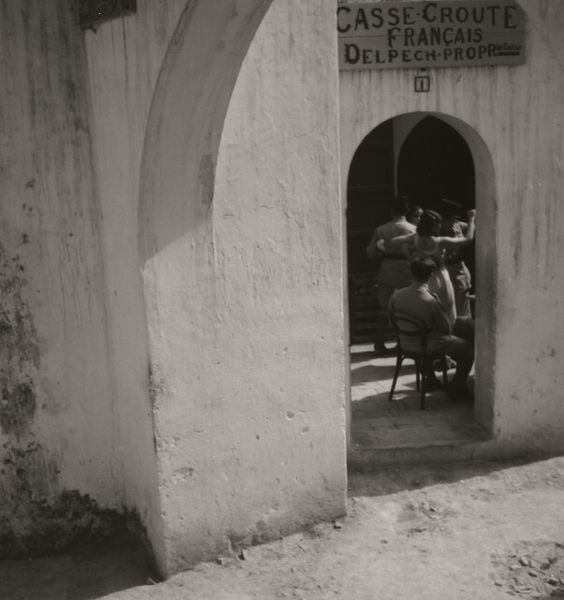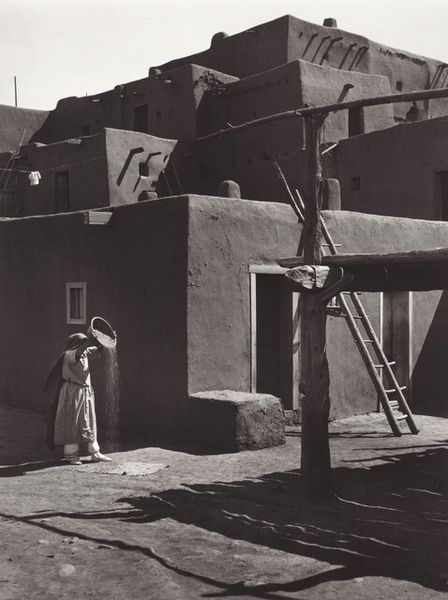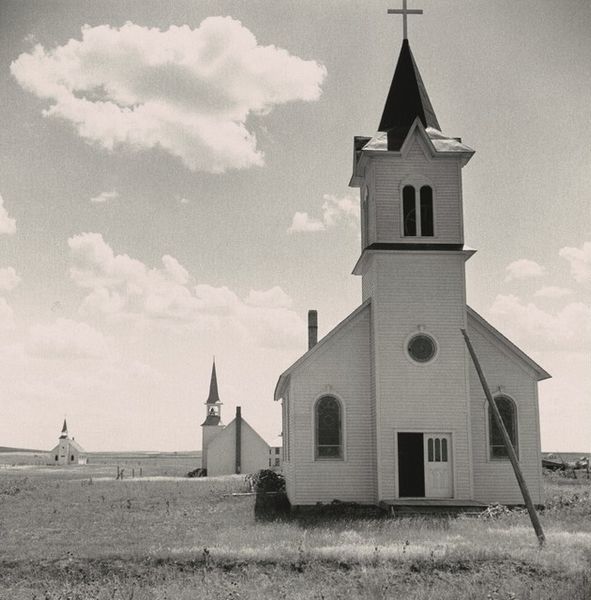
photography, gelatin-silver-print, architecture
#
portrait
#
conceptual-art
#
black and white photography
#
postmodernism
#
appropriation
#
black and white format
#
historic architecture
#
photography
#
black and white theme
#
black and white
#
gelatin-silver-print
#
monochrome photography
#
monochrome
#
architecture
#
historical building
#
statue
#
building
#
monochrome
Copyright: Cindy Sherman,Fair Use
Curator: Cindy Sherman's "Untitled Film Still #42," from 1979, offers a poignant, constructed narrative in black and white. The gelatin-silver print captures a woman standing before a church, but it's far from a straightforward depiction. Editor: Immediately, I’m struck by the stillness. The high contrast and architectural rigidity create a solemn, almost melancholic mood. There's a palpable sense of waiting or quiet anticipation. Curator: Precisely. Sherman, working within a postmodern framework, appropriates and re-stages cinematic tropes. The "Untitled Film Stills" series avoids direct narrative, instead playing with established visual languages. Here, we see her embodied role in an imagined film still evokes mid-century foreign films and plays on the role of women. Editor: The religious architecture combined with the solitary woman—presumably a character created and portrayed by Sherman herself—suggests themes of isolation or even spiritual reflection. Do you think there’s a deliberate commentary here on female representation? Curator: Absolutely. Consider how Sherman deliberately subverts expectations. The series invites us to confront our assumptions of gender, identity, and visual storytelling. The woman isn’t simply standing there; she's occupying and, in some way, dismantling the stereotypes inherent within the image. The Virgin Mary inside the architecture and her stance is meant to make us confront something... Editor: And the lack of clear narrative…that’s key. It’s not about knowing her story but recognizing the *possibility* of stories we already carry, those cinematic and cultural archetypes that shape how we see women. Curator: Exactly. She gives a voice to how the media, especially film and media, depict woman’s representation through very stereotypical ideas and visuals, inviting each one of us to reflect on and become hyperaware of it. Editor: So it becomes less about the individual and more about a collective memory, a shared understanding of female representation within our society and it effects. A potent, visually economic statement. Curator: I think you’ve captured the essence, right! It's also her take and challenge against those forces that shaped us until this present time. We are her and she is us! It feels like an encounter to be reckoned with.
Comments
No comments
Be the first to comment and join the conversation on the ultimate creative platform.


